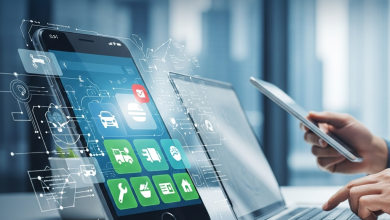Drones are transforming industries, moving from niche gadgets to essential tools. These unmanned aerial vehicles (UAVs) now redefine how businesses approach complex challenges. They offer unique perspectives, streamline data collection, and enhance operational efficiency across sectors. For any enterprise leader, understanding drone applications is key to maintaining a competitive edge.
The integration of drones into daily operations is not just about automation. It represents a fundamental shift in how industries gather and analyze data. Drones equipped with high-resolution cameras, thermal sensors, and LiDAR technology capture information previously difficult or impossible to obtain. This capability enables more precise, faster, and safer operations.
From agriculture to public safety, drones provide solutions that drive productivity and reduce costs. They can quickly survey vast areas, monitor assets in remote locations, and deliver goods with unparalleled speed. For many roles, the message is clear: drone technology is a powerful force for innovation and growth.
This article explores the key sectors leveraging drone technology. We will examine the specific applications within each industry and highlight how these flying robots are creating value. By understanding these use cases, business leaders can identify opportunities to integrate drones into their own operations, unlocking new levels of efficiency and strategic insight.
Agriculture
The agricultural sector has embraced drone technology to address long-standing challenges in crop management and resource optimization. Drones provide farmers with an aerial perspective of their fields, enabling precise monitoring and targeted interventions. This shift toward precision agriculture helps maximize yields while minimizing waste.
Drones equipped with advanced imaging sensors collect data on crop health, soil conditions, and hydration levels. This information allows farmers to identify issues like nutrient deficiencies, pest infestations, and irrigation problems before they escalate. By applying treatments only where needed, farmers reduce their dependence on pesticides and fertilizers, leading to more sustainable practices. Drone technology enables enhanced crop surveillance and precision mapping, both of which are critical for modern farming.
Beyond monitoring, drones also assist with tasks such as planting and spraying. Automated drones can distribute seeds with remarkable accuracy, ensuring optimal spacing and depth. Similarly, they can apply treatments with targeted precision, covering large areas much faster than traditional ground-based machinery. These applications save significant time and labor, making farming operations more efficient.
Construction and Real Estate
Construction and real estate are also industries benefiting from drones, as they provide invaluable data throughout a project’s life cycle. From initial site surveys to final inspections, UAVs provide a comprehensive, accurate view of progress. This aerial intelligence helps project managers make informed decisions, mitigate risks, and keep projects on schedule.
During the pre-construction phase, drones conduct detailed topographical surveys, creating precise 3D models of the terrain. This data is essential for planning and design, helping engineers and architects visualize the site and anticipate potential challenges. Using drones for surveying is faster and more cost-effective than traditional methods, providing a clear return on investment.
Throughout construction, drones monitor progress, track assets, and ensure compliance with safety regulations. Regular aerial imagery provides stakeholders with a clear view of the job site, improving communication and accountability. In real estate, drones create compelling marketing materials by capturing stunning aerial photos and videos that showcase properties from a unique, attractive perspective.
Public Safety
Emergency services and law enforcement agencies are increasingly deploying drones to enhance their operational capabilities and improve public safety. These devices provide situational awareness during emergencies, allowing first responders to assess situations quickly and safely. The use of drones in these scenarios can often mean the difference between life and death.
Firefighters use thermal imaging drones to identify hot spots in burning buildings, locate trapped individuals, and monitor the spread of wildfires. This information helps them devise effective strategies while minimizing personnel risk. Law enforcement agencies use drones for crowd monitoring, accident reconstruction, and search-and-rescue operations.
For instance, a drone can cover a large, difficult-to-access area in a fraction of the time it would take a ground team. The availability of specialized drones for public safety has made this technology indispensable.
In disaster response, drones assess damage, locate survivors, and deliver essential supplies, such as medicine and communication devices, to isolated areas. Their ability to operate in hazardous environments makes them a crucial tool for humanitarian aid organizations and government agencies during natural disasters.
Energy and Utilities
The energy and utilities sector relies on extensive infrastructure networks, often located in remote or hazardous areas. Drones have become an essential tool for inspecting and maintaining these assets, improving safety and reliability while reducing operational costs.
Drones equipped with high-resolution cameras and thermal sensors inspect power lines, wind turbines, solar farms, and pipelines. They can detect defects, such as damaged components or vegetation encroachment, without requiring personnel to work at dangerous heights or in rugged terrain. This proactive approach to maintenance helps prevent outages and prolongs the lifespan of critical infrastructure.
In the oil and gas industry, drones monitor for leaks, inspect flare stacks, and survey exploration sites. These tasks are inherently dangerous for human workers, so using drones improves safety. The data collected by drones also helps companies comply with environmental regulations and optimize their operations for greater efficiency.
The Future of Drone Integration
The impact of drone technology continues to expand as capabilities advance and regulations evolve. The convergence of drones with artificial intelligence, machine learning, and the Internet of Things (IoT) will unlock even more powerful applications. For enterprise leaders, staying informed about these trends is crucial for strategic planning. The list of industries benefiting from drones will only continue to grow.
As drone autonomy improves, we will see swarms of drones working collaboratively to perform complex tasks, such as large-scale construction or precision agriculture operations. Onboard AI will enable real-time data processing, allowing drones to make decisions and take action without human intervention. This evolution will further enhance efficiency and open up new business models centered around drone-as-a-service platforms.
For engineers and data developers, the massive amounts of data generated by drones pose both a challenge and an opportunity. Developing robust platforms for data management, analysis, and visualization will be critical. The insights derived from this data will drive innovation and create new value streams for businesses across all sectors. Embracing this technological shift is not just an option; it is a necessity for future success.




